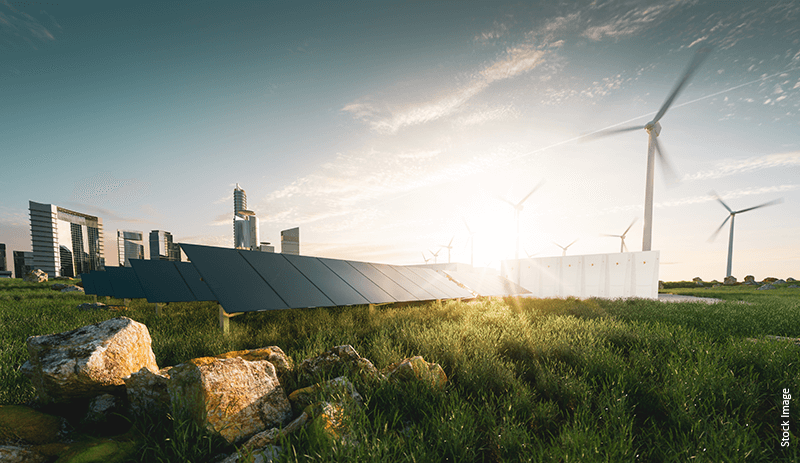30 January, 2024
4 mins read

In today’s pursuit of a sustainable future, the convergence of architecture and environmental responsibility has become crucial.
Sustainable construction is now the key to shaping the way the industry builds and coexists with its surroundings. In principle, it is something that extends beyond design and how it harmoniously integrates itself into the environment.
By definition, sustainable architecture is the practice of creating designs that not only involve the use of sustainable construction materials but are also dedicated to minimising the human impact on the environment.
While enhancing the quality of life of its inhabitants is a core part of the essence of the concept, it also focuses on harmoniously coexisting with nature and providing a bridge to the balance between artificial constructions and ecological systems.
The fundamental principles of sustainable architecture include:
The impact of this practice on the environment and the quality of human lifestyle is equally profound.
Pursuing sustainable living and sustainable housing has a significant impact on the human body’s well-being. The improvement in the quality of air, thanks to the presence of nature, affects the overall health of the human body.
Such environments are known to reduce stress levels and improve bodily functions with their calming and flourishing effects.
Sustainable spaces and sustainable homes are built with the integration of resource-efficient systems like water-efficient plumbing systems that are engineered to purify and reuse water safely. Such structures alleviate the waste of resources and reduce the strain on shared resources like water, energy and so on.
The initial higher costs for sustainable construction & sustainable construction materials can mislead people into believing that it is an expensive investment. However, the lower maintenance associated with energy-efficient designs and elements makes these constructions economically viable over the long run, saving not just costs but also time and energy.
There has been a significant surge in the recognition of sustainable architecture, along with a significant growth in eco-friendly and energy-efficient construction practices in India. Here are some key highlights of India’s adaption of sustainable architecture and sustainable construction:
India has seen a significant rise in the adaption of green building certifications like Green Rating for Integrated Habitat Assessment (GRIHA) and Leadership in Energy and Environmental Design (LEED).
These certifications are known for setting benchmarks for sustainable construction, promotion of resource efficiency, energy conservation and environmental responsibility.
The country is making notable progress towards the integration of renewable energy resources into its sustainable construction. Most eco-friendly projects, like an eco-friendly house or workspace, are shown to integrate solar power in particular.
Solar panels on rooftops in industrial estates have been growing in number, with building designs incorporating their instalments in their construction concepts.
Architectural designs and construction practices that adapt the principles of sustainability have a few specific criteria. Here are some of them:
Sustainable construction and design incorporate design elements and technology that promote the optimisation of resources while simultaneously ensuring the reduction in consumption of those resources.
Promoting natural lighting, utilising renewable energy sources like solar energy, implementing water-conserving plumbing systems, and seamless integration of rainwater harvesting systems are all great examples of sustainable household designs.
Sustainable construction integrates recycled, eco-friendly or locally sourced materials, reducing carbon footprint and promoting resource efficiency to minimise the impact on the environment.
It involves prioritising minimal ecological impact by choosing sites that do not harm natural habitats. They also use landscape designs that support biodiversity and a healthy ecosystem.
Sustainable architecture integrates the designing of structures that adapt to changing environmental conditions while also embracing innovative technology and engineering that promotes energy efficiency and sustainability.
This practice promotes more innovative solutions that cater to human needs while simultaneously taking into account environmental responsibility.
With society slowly shifting its focus towards sustainable living, the real estate industry is rapidly evolving. Incorporating sustainable and eco-friendly materials into construction is no longer just a trend, but an initiative taken to foster a harmonious relationship between human creations and nature.
At the heart of this holistic approach is Piramal Mahalaxmi, the true example of the seamless integration of luxury in living experiences.
Disclaimer- This article is based on the information publicly available for general use as well as reference links mentioned herein. We do not claim any responsibility regarding the genuineness of the same. The information provided herein does not, and is not intended to, constitute legal advice; instead, it is for general informational purposes only. We expressly disclaim /disown any liability, which may arise due to any decision taken by any person/s basis the article hereof. Readers should obtain separate advice with respect to any particular information provided herein.
24 April, 2023
03 January, 2022
25 November, 2021
25 November, 2021